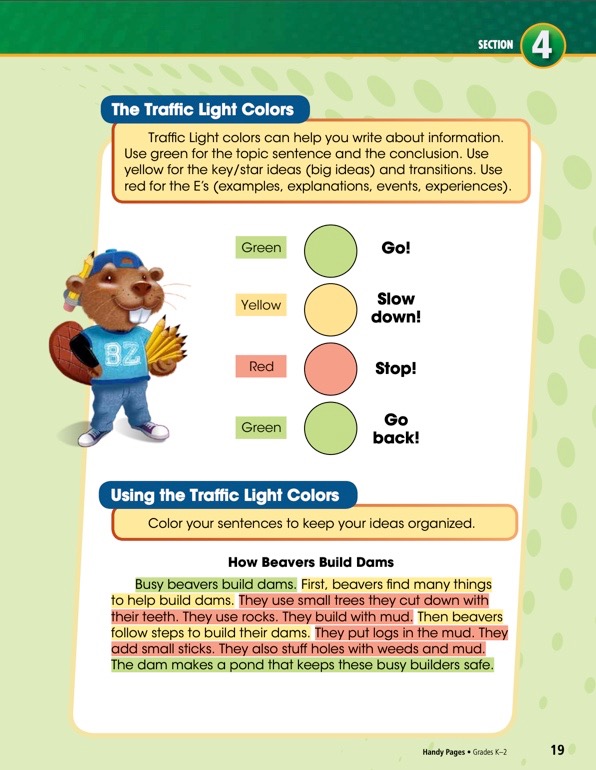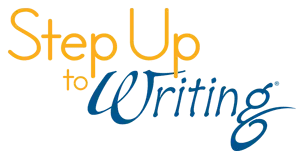The Science of Writing: 8 Routines

At present, only 24% of the students in our nation write proficiently. Yet, a powerful, little-known evidence-based science of writing exists! It is detailed in the FREE What Works Clearinghouse Writing Practice Guide and eight core practices are summarized here.
1: Analyze Exemplars
Teach students how to read both published and peer mentor writing “with a writer’s eye” to analyze features of effective writing, such as text structures (i.e. TIDE), rich sentences, or word choices. Color code for these, as Step up to Writing® does.
- Topic sentence
- Important Evidence
- Detailed examination
- Ending

While analyzing these features, emphasize how writers use writing processes too (POWER):
- Pull apart the prompt and pick my ideas
- Organize my notes (TIDE)
- Write and say more
- Edit
- Revise
2: Plan & Organize
Teach each step of POWER, starting with plan and organize. Have students backward map by turning peer exemplars into short notes in an organizer. For example, “Malala inspires others to take action” can be shortened to “M inspires–take action”. Students can also note key sentence frames (By…., the author highlights….) to then use these themselves and improve their sentence quality. (Insert step up piece, back mapped here)
3: Revise & Edit
Next, explicitly teach revision and editing. This time, rather than using an exemplar, use a below-level writing sample. Identify, as a class, what is effective in it, and what to strengthen. After modeling revision, students can work collaboratively in groups to revise sentences, ideas, or word choice in their own pieces.
4: Self-Talk
To help students self-regulate, explicitly teach them to replace negative self-talk with positive. For example, when writing, teach them to replace “I can’t” or “I’m stuck” with “This may be a challenge, but I am up for it.”
5: Think Alouds
Model how you would like your students to think and direct themselves in using strategies such as POWER and TIDE with think alouds as you demonstrate going through the writing process. You cognitively model for students what goes on in a writer’s head—making the invisible visible—as you: model using POWER and TIDE, focusing on sentence construction or word choice decisions as you write. You also model getting off track and the self-talk you use to persist through the process.
6: Collaborative Practice
Next, have students join you in writing a piece together as a class, with you projecting yourself engaging in each step of the writing process (POWER), as your students actively contribute and you use POWER compose a full piece working through : P-picking ideas, O-organize, W-write a draft, then finally E-editing and R-revising it together.
7: Score & Set Goals
Before giving students feedback on their writing, or even teaching them to self-score their own writing, first—teach them how to understand and use a scale. Score your color-coded exemplars together, and the collaborative pieces you wrote together, discussing possible scores as you go. When students learn how to score, they can see and celebrate their growth as writers, and set goals to grow further.
8: Peer Feedback
Teach students how to give constructive, helpful feedback as you begin having your students give peer feedback. Peer feedback allows students to have meaningful conversations as writers about writing. They often learn the most from each other.
Only 24% of students in our nation write proficiently. It does not need to be this way. Schools using these approaches see dramatic gains in writing, reading, and even on state assessments. PS 200 Benson School (NYC)C began using these eight and rose from 40% proficient to 77% -- for their entire school. Yours can too!
Join Leslie Laud as she presents a useful webinar, Science of Writing: Accelerate Overall Literacy Development via Writing. Watch now
Learn more about Step Up to Writing here.

